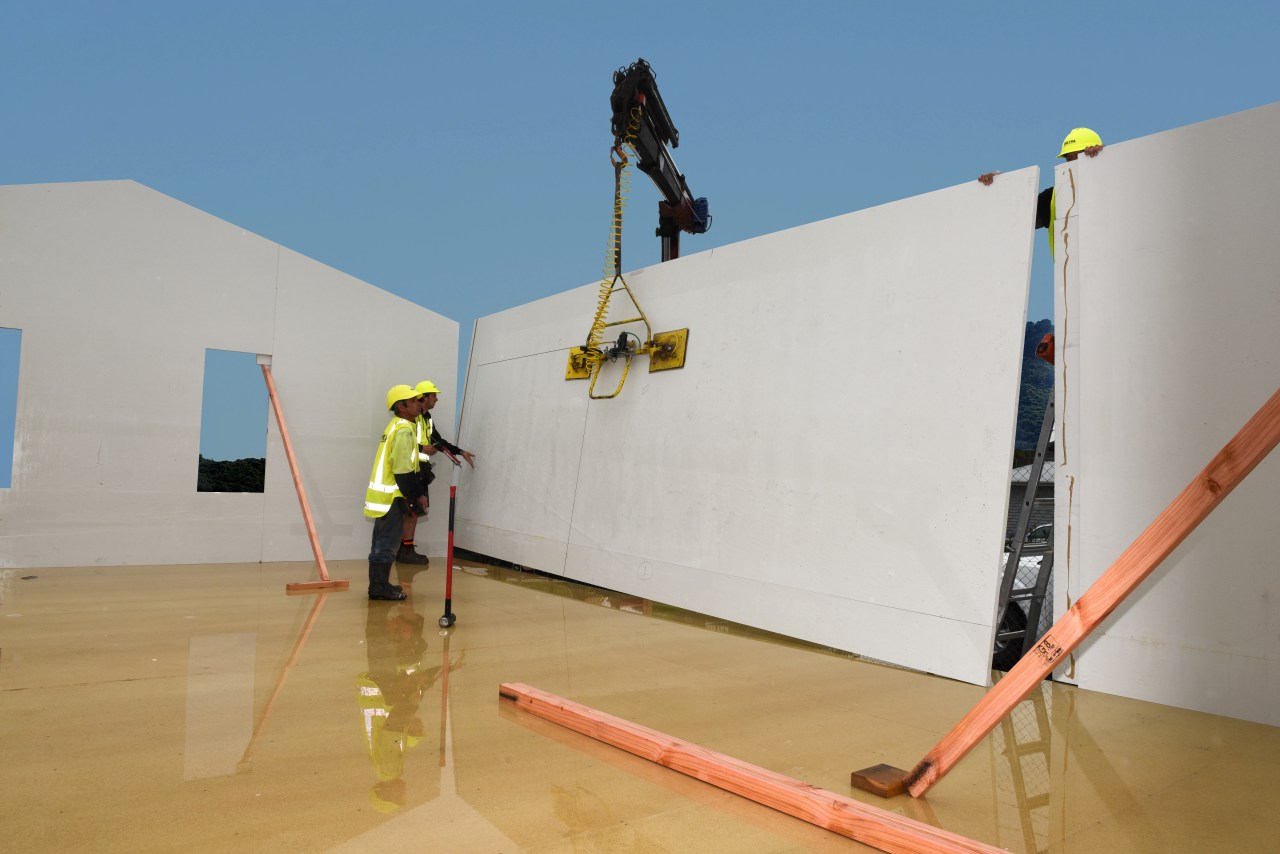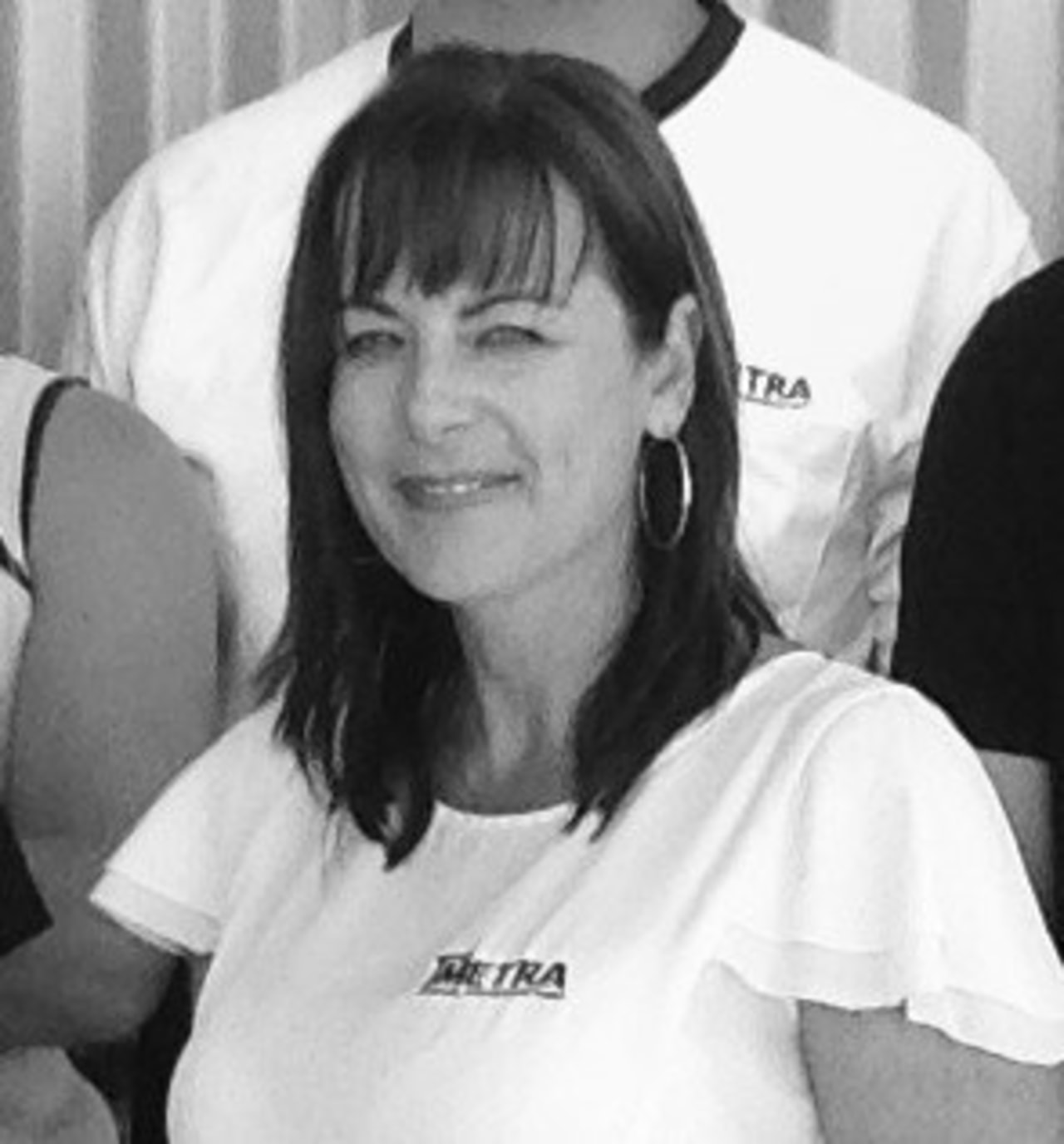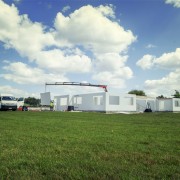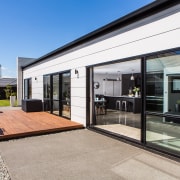Residential building demand creates need for prefabricationt technology
Melissa Savage of Metrapanel discusses efficiencies and cost savings of prefabrication technology, which speeds up new home building

With the increased housing demand in our cities continuing to have an excessive impact on the building industry, we have heard repeatedly that business-as-usual just won't cut the mustard. So why haven't more building companies embraced prefabrication technology as an alternative construction solution?
Can you tell the difference, on completion, between a prefabricated home and traditionally built home? Most probably not. What's important is that your home is durable and warm, and there are no compromises on quality.
Commercial projects utilise prefab components in a variety of projects, but residential builders in New Zealand are often perceived by European innovators as behind in their thinking although we are ahead of Australia. In the residential housing sector Australia's uptake of the technology is at 3% and New Zealand is currently sitting at 33%, which is mostly wall framing, roof trusses, windows and joinery (BRANZ 2013). In Sweden, prefab custom closed panels are the preferred construction technique, making up 90% of the housing.
A report from the Productivity Commission indicates that one of the key barriers to productivity growth is the uptake of innovation in particular partnering and collaboration. But while it can be difficult to find the time to investigate complementary options to enhance proven traditional methodology and processes, it is important to know that the design and construction industry in New Zealand is potentially at the tipping point of delivering better value to clients and, importantly, to embattled first-home owners.
Approximately 30,000 houses are needed urgently in Auckland and Canterbury, and construction demand is expected to increase by 10% per year for the next four years. At the cusp of 2015 the uptake of prefabrication has been likened to an explosion, with a much wider range of prebuilt product entering the market. Economies of scale and standardisation
Past booms have shown that when construction demand goes up, quality goes down. The greatest benefits of prefabrication occur when economies of scale and standardisation are achieved. But this doesn't mean that all buildings need to look the same. Good design facilitates desirable and sustainable urban environments with buildings that are future proofed. The role of the architect and the design team remain critical in providing a range of aesthetic solutions.

Pamela Bell of PrefabNZ says prefab technology is important to New Zealand because the building and construction sector is the fifth largest and contributes approximately 4.3% to GDP.
"It currently employs more than 175,000 workers nationally, including a large number of labour-only contractors. This sector also comprises predominantly small firms that focus primarily on residential construction. Fostering and supporting greater collaboration across the sector through the development and use of prefab technology can deliver sustainable benefits to the New Zealand economy."
Prefab methodology can reduce the build cost on a new home by 15%, which is $32,000 for a 157m² house (PrefabNZ Impact Report 2015).
Safety is another benefit. A recent report by BRANZ into prefabrication highlighted that 75% fewer fatalities occur in factory-based construction than using site-based processes. Using a solution such as ICS Innovative Ceiling Systems does away with the need to install nets and edge protection. This is suitable for a variety of hybrid methods.
Six-week turnaround is key
A strong prefabrication sector will deliver genuine benefits for the whole construction industry, encouraging innovation and improving efficiency, quality and affordability. Established panel system manufacturer Metrapanel, which has been in business for 25 years, has proved this statement with three of its Platinum Installers perfecting a six-week turnkey solution for an average 160-180m² house with a team of three, and no compromise on quality. Further efficiencies can be made in a factory-built environment, such as BuiltSmart, which produces 45-153m² transportable houses in just four to six weeks.

Recent innovations in the prefab sector
Some innovations over the past year include a weatherproof lid. Bad weather can cause delays of more than 13% of construction time. Saving time saves money and enables more houses to be built per year using the same labour resources. A solid ceiling provides a weatherproof lid over a build as soon as wrap is installed the frames can begin the drying process, even before the roof is on.
A new Laing Properties show home uses extrusions with 7.35m x 2.45m Metrapanel sheets to create a complete plaster-less house. The benefits of this system bring to light new possibilities for rental homes, apartments and motel complexes where low-maintenance solutions are a necessity.
The demand is set to stay. As with other New Zealand prefab manufacturers, Waikato-based Metrapanel experienced its biggest year in 2014, with 420 houses, making a total of 9000 houses over 25 years, built by the company's installers using its prefabricated system.
However, it is fair to say the Auckland market can be a struggle to tap into. While there are some incredible opportunities put our way, builders are often too time-poor to take that step into prefabrication. More builders need to be trained in the systems to meet the demand prefabrication is the way forward.
Story by: Trendsideas
Home kitchen bathroom commercial design
Lean and green
Stretching out to nature
Natural is always in style









